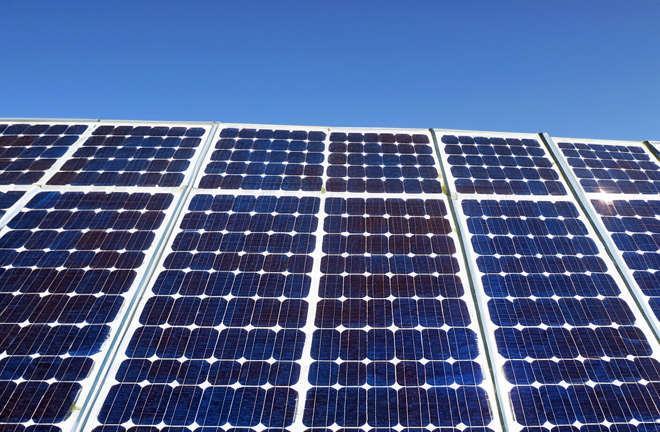Coal, oil and natural gas have fuelled the global economy for two centuries, but in just over two decades, that will be the end of the story: in order to slow down global warming, all industrialised countries want to become climate-neutral, i.e. only emit as much CO2 into the atmosphere as is removed from it elsewhere. China, for example, is aiming for climate neutrality by 2060, the USA and EU countries such as Spain and the Netherlands by 2050, and Germany by 2045.
The question is: where will the energy come from when all coal and gas-fired power plants are shut down?
The cornerstones of the energy transition
Energy experts believe that a climate-neutral world is based on two building blocks: a drastic expansion of renewable energies and storage systems that compensate for fluctuations in renewables.
Solar and wind energy have the greatest potential
Photovoltaics and wind power will be by far the most important energy sources. They are being expanded on a large scale and generate electricity at often unbeatably low costs. Even the most efficient gas-fired power plant cannot compete economically with solar parks in sunny countries. However, it is also clear that the demand for electricity will grow strongly in order to replace fossil fuels.
Biomass, hydropower and geothermal energy will also play a role, but their potential is limited compared to wind and solar: Large areas of arable land for energy crops such as maize and rapeseed are required for electricity from biomass plants, while rivers are dammed for hydropower. Both often have harmful side effects, for example on biodiversity. Geothermal energy, on the other hand, is dependent on suitable soil formations and is not an alternative everywhere.
Why energy storage is essential
Wind turbines and solar panels only supply electricity when the sun is shining and the wind is blowing. Storage systems are therefore crucial for preventing blackouts. Short-term electricity requirements are primarily buffered by electric battery storage systems, the price of which has fallen dramatically in recent years. New generations also manage without cobalt, which is often extracted under questionable conditions. Lithium is also increasingly coming from clean sources in Australia, and will probably also come from Europe in the future. Battery storage capacity is already growing rapidly, and it will multiply again if the batteries of electric cars can be used to stabilise the power grid in the future.
Pros and cons of green hydrogen
In longer phases without wind and sun, another storage medium comes into its own: Hydrogen. It is often mistaken for a source of energy, but hydrogen is actually an energy carrier. It is not extracted like natural gas, but has to be produced using green electricity by means of electrolysis in order to be climate-neutral.
However, some of the energy is lost in the process, which reduces efficiency. Hydrogen will therefore not be the central energy source of the future. But it does have one advantage that makes it indispensable in certain sectors: it is easy to store and the infrastructure for this already exists, especially in Germany. There are large underground storage caverns here that are currently used for fossil fuels. In future, green hydrogen could be stored and converted back into electricity in gas-fired power plants when required. The problem, however, is that hydrogen will not be available on a large scale in the near future.
Thermal storage as an efficiency turbo in industry
This is where thermal storage systems such as the ThermalBattery™ from ENERGYNEST, which are already being used in industry, come into play. They do not contain electricity or hydrogen, but heat. Thermal storage systems are a key element for a successful energy transition, especially for the decarbonisation of industry. Not only can they store previously unused waste heat and channel it back into the process, which leads to a significant increase in efficiency and therefore lower energy costs. Thermal storage systems can also compensate for the volatility of renewable energies by storing energy in the form of heat and releasing it again when required. This makes companies independent of fossil fuels and significantly reduces emissions from their plants.
Other cornerstones of the energy transition
Renewable energies and storage are flanked by other solutions. These include above all the flexibilization of electricity consumption: ideally, energy is consumed or stored when there is a surplus when there is a lot of wind and sun. Other elements include the cross-border expansion of electricity grids to compensate for regional energy bottlenecks and efficiency improvements to limit the demand for electrical energy.



